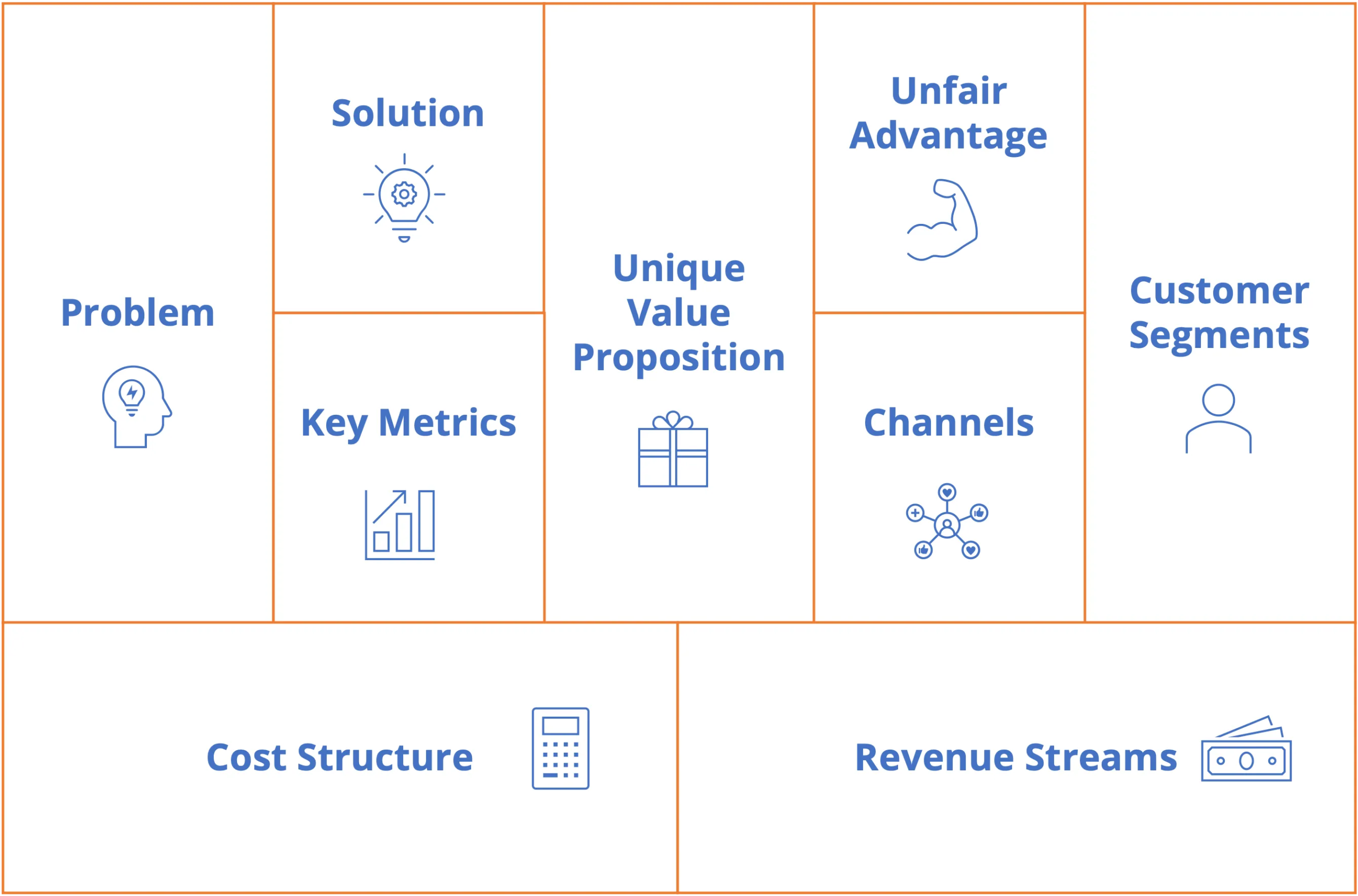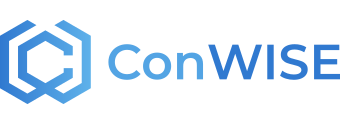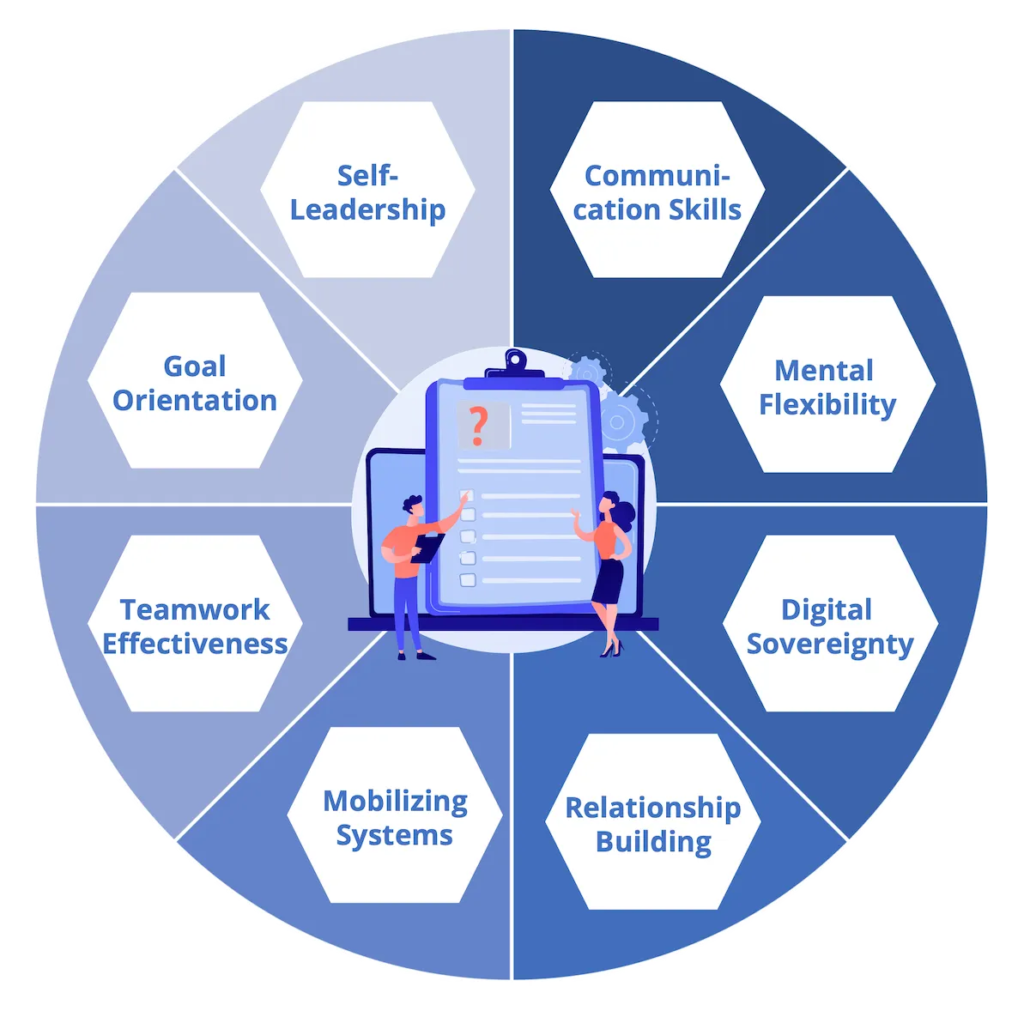Lean Business Canvas

Lean Business Canvas
Approach Lean Business Canvas
As with the classic Business Model Canvas, 9 topic areas that span a business model are also processed here. Using questions and examples, founders in particular can create their concept with little effort.
The topics are divided into three main areas:
- The target customers, their problems and possible solutions
- The market differentiation of the initiative
- The financial conditions
In this way, a business model can be developed on three ConWISE boards.
Description of the Lean Business Canvas
Many innovators and founders ask themselves how they can find out whether their idea will work before they invest a lot of time and effort in formulating a business plan. One possibility is to create a short and precise business model. The classic Business Model Canvas developed by Alexander Osterwalder (background here) is well suited to clearly depict an existing and functioning company on one page, but it is not pragmatic enough to present a business idea in the early stages.
Ash Maurya modified Osterwalder’s model to the effect that business ideas can be put to a test even before a company is founded. For this purpose, he exchanged certain building blocks of the business model and replaced them with those that have a high relevance especially for start-ups in the early days. This gave rise to the approach of a Lean Business Canvas presented here.
Thematic classification
Strategy development


